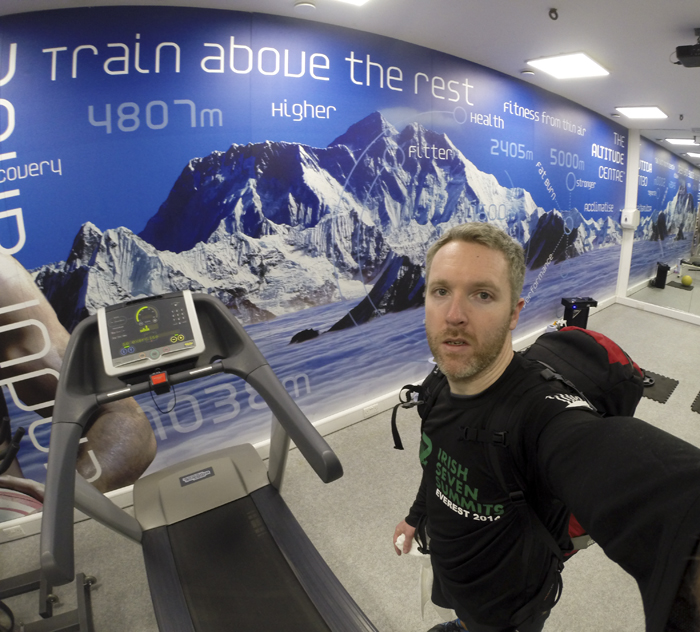Preparation for Everest 2014 included living for 2000 hours in simulated altitude in the Altitude House at UL from July 2013 to March 2014. The University of Limerick facility is the only residential altitude training centre in Ireland and UK, providing elite sports people simulated altitude conditions while also availing of the world-class sports facilities on campus at UL.
Paul spent an average of 14-16 hours per day living in simulated altitude created by the filtering of air entering the house and the dumping overboard of most of the oxygen until the mix of oxygen-nitrogen is equivalent to the desired altitude.
Altitude living was complimented by Altitude Training at the nearby Delta Sports Dome in Limerick, complete with state-of-the-art Altitude Gym where the public can train at altitude. Training in the altitude gym was twice-weekly and involved cardio sessions with and without the backpack, usually interval-structured to heighten heart rate and test my capabilities in sustaining blood oxygen levels while undergoing high physical demand at altitudes up to 4000m.
Everest sits at 29,035ft or 8848m, with the summit sitting in the jet stream and in a zone of significantly reduced air. When your body is exposed to “thin air”, it compensates for reduced oxygen levels by increasing the bloods oxygen-carrying capacity, as well as its ability to use that oxygen. By living in the Altitude House and training at an Altitude Gym, my body is forced to adapt to these thin air environments as follows…
Increasing natural hormone erythropoietin production, which in turn increases red blood cell mass for delivering oxygen to muscle cells and converting it into energy, thus boosting total blood volume to move oxygen more efficiently through my bloodstream.
An increase in V02 max (the maximum amount of oxygen the body can convert to work) giving me more stamina for the long haul.
Cranking-up hematocrit levels to provide a greater percentage of cells carrying oxygen.
Elevating capillary volume, creating more blood pathways to muscle cells for improved muscle oxygenation.
Increasing the volume of mitochondria – the powerhouses in cells that help the body turn oxygen into energy.
Increasing the lungs’ ability to exchange gases efficiently – so that for every breath taken, more oxygen gets into the bloodstream.
These changes result in greater aerobic capacity (VO2 max), greater anaerobic capacity (the body’s ability for explosive performance) and improved endurance – meaning faster speeds at a given exertion level. The aim of living and training in simulated altitude conditions was to improve adaptation to all of the above so that the output on Everest is maximised in the thin-air environment.

